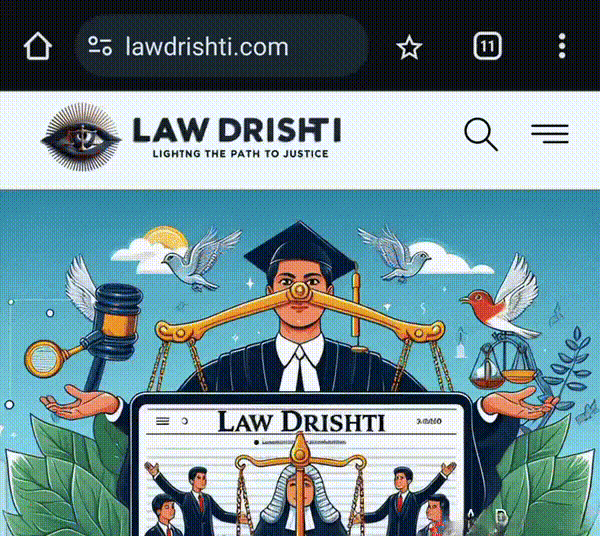Introduction
Sexual harassment is a symptom of strained personal connections. It is not only a breach of human decency, access to social welfare, and fairness guaranteed by all social systems but also a violation of the human right to life and peaceful relationships as granted by law. Although sexual harassment in educational institutions has received some publicity in cultural and legal circles over the past few decades—such as the passage of the Sexual Harassment Act of 2013—the causes and effects of sexual harassment in workplaces have received less recognition.
This article provides insight into the sexual harassment issues encountered by students and professors in Indian schools and universities. These issues significantly impact women seeking better employment opportunities and girls pursuing education in a developing economy. The focus of this article is to examine the behavior of assaulters, who may be employers or employees of academic institutions, and to explore how to resolve victims’ complaints quickly yet fairly. When a woman who has been sexually harassed speaks out against unjust treatment, the integrity and stability of the academic system can be severely harmed and polluted.
The intensity of the effects faced by young women and lecturers subjected to abuse, especially given the fiduciary relationship between the aggrieved woman and the offender during their time in educational establishments, makes this issue both relevant and important. Recognizing what constitutes sexual harassment, how to address it, and how to prevent it in educational institutions is critical for administrators, employees, students, and their families. It is long overdue for each educational establishment to design and implement an effective grievance redressal mechanism to address the problem promptly.
Legal Consequences of Sexual Harassment in India
Sexual harassment is psychologically harmful and creates an unpleasant and inefficient work environment. It is usually classified into two categories: quid pro quo and hostile work environment.
- Quid pro quo refers to inappropriate behaviour when a colleague, manager, or supervisor seeks physical favours in return for job-related benefits and threatens employees with severe consequences if such demands are not met.
- Hostile work environment occurs when a colleague, supervisor, or superior engages in physical or verbal actions that interfere with another person’s ability to work or create a workplace culture that is oppressive, aggressive, inflammatory, or embarrassing, thereby violating personal integrity.
Sexual assault has long been acknowledged as one of the most terrifying and offensive acts of abuse. The landmark case Vishaka vs. State of Rajasthan (1997) established workplace sexual harassment as a violation of human rights. The Supreme Court’s ruling laid out guidelines for implementing basic human rights for women through preventive measures, protective mechanisms, and retributive justice. It mandated that the government, public sector, and other entities establish grievance redressal mechanisms.
The court also cited the United Nations Convention on the Elimination of All Forms of Discrimination Against Women (CEDAW), adopted in 1979, and ruled that in the absence of explicit legislation, international laws could fill the gap to protect fundamental civil rights in India. Until the Vishaka ruling, India lacked specific legislation addressing sexual harassment. Provisions such as Sections 354 (outraging a woman’s modesty), 375 (rape), and 509 (intending to insult a woman’s modesty) of the Indian Penal Code, 1860, were insufficient to address and reduce instances of sexual harassment.
Sexual harassment violates a woman’s fundamental right to equality under Article 14 of the Indian Constitution and her right to liberty and dignity under Article 21, which includes the right to a harassment-free workplace. Several Supreme Court cases interpreting these articles have emphasized the right to a dignified existence guaranteed by Article 21.
It took 16 years for Indian lawmakers to enact legislation that provides a comprehensive framework for addressing complaints of sexual harassment. The law also ensures women’s rights are protected. In Bangladesh National Women Lawyers Association vs. Government of Bangladesh (2009), the Bangladesh High Court cited instances of sexual harassment of female teachers and students in educational institutions and specifically noted that the regulations from the Vishaka case could apply to academic institutions as well as workplaces.
Conclusion
Sexual harassment of women is a global issue whose severity is felt by all parties involved. To combat harassment, countries have adopted various legal strategies. With the enactment of India’s law on workplace safety for women, which includes rigorous guidelines for prevention and protection, every woman—whether a student, non-academic staff, or educator—must be safeguarded from sexual misconduct, threats of violence, and exploitation while associated with university premises. Our goal should be to create a society where every woman is free from sexual harassment and has the liberty to work in an environment free of such misconduct in any form.
Riya Majumder (CMR Law School – 5th Year )





